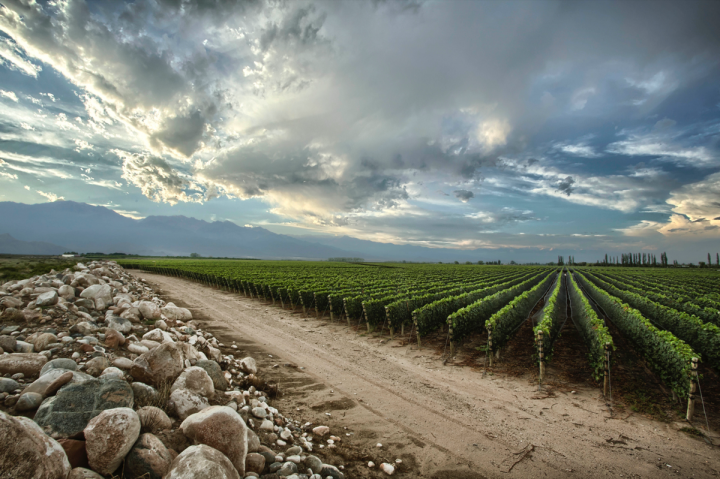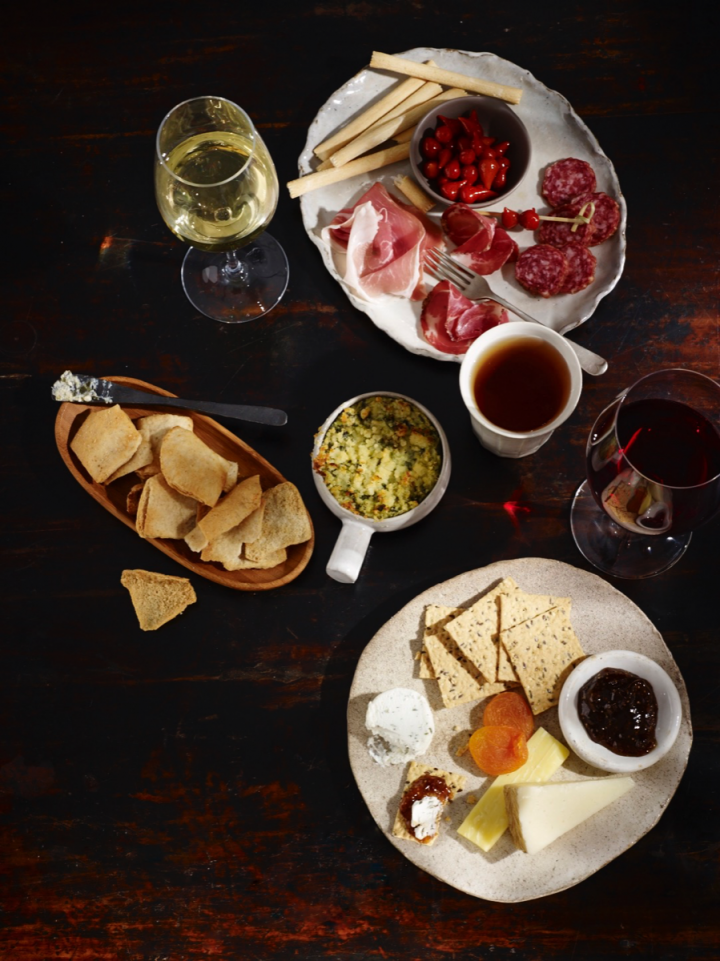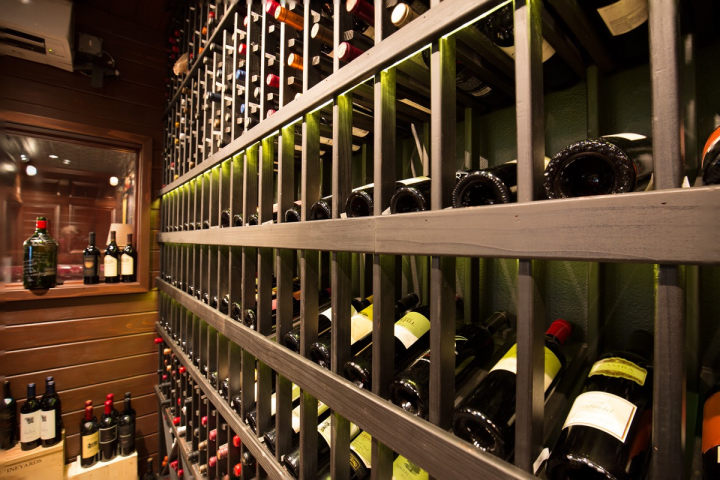
Everyone drinks Malbec. Argentina’s take on the Bordeaux varietal exploded onto the scene in the last decade as a discovery wine and now appears on glass lists everywhere, including Starbucks. When the Seattle-based coffee giant launched its “Evenings” program in about 100 stores this year, sommelier and vice president of concept innovation Rachel Antalek featured an Argentine Malbec ($8 to $10 a 5-ounce pour) on every menu. Brands include Alamos, Bodega Tamarí Reserva or Terrazas de los Andes Altos del Plata, depending on location.
At the two-unit Wally’s Wine & Spirits in Los Angeles, international wine buyer Jordi Urquizzo says Argentine wines are strong, and the category is very important to the company’s bottom line. Wally’s stocks 55 Argentine wines and is bringing in more offerings, particularly older vintages. The 2011 Catena Alta Malbec ($58 a 750-ml. bottle) is the top-seller, and Urquizzo says many collectors who used to seek out California Cabernet Sauvignon now ask for older-vintage Malbec. He recently sold out of the 1977 Bodega y Cavas de Weinert Estrella Malbec ($375) and plans to buy more. From Starbucks patrons to fine wine collectors, Malbec has gone mainstream.
Argentina shipped 10.4 million nine-liter cases of table wine to the United States in 2014, according to Impact Databank, with bottled wine comprising 55.2 percent and bulk accounting for the remainder. Bottled wine exports fell 6.2 percent to 5.7 million cases last year. Since hitting a peak of 6.1 million cases of bottled wine in 2011, Argentine wine exports to the United States have eased, but they haven’t steeply declined.
Of the top five Argentine wine brands, four advanced and three grew at double-digit rates in 2014, according to Impact Databank. The Wine Group’s (TWG) Trapiche jumped 25 percent to 350,000 cases, while Guarachi Wine Partners’ Bodega Norton advanced 19.8 percent to 260,000 cases and Quintessential Wines’ Valentín Bianchi increased 10.9 percent to 265,000 cases. E&J Gallo’s Alamos stayed in the lead position, rising 2.9 percent to 900,000 cases, though the company’s Don Miguel Gascón fell 1.7 percent to 290,000 cases.

Room To Grow
Importers and on- and off-premise operators report strong Argentine wine sales, especially in the premium and super-premium tiers. Although consumer awareness of Argentine wines is high, importers say the category still has room to grow. “While Malbec will continue to lead the charge, there are upside opportunities for other varietals from Argentina,” says Molly Davis, vice president of marketing for the premium business unit at E&J Gallo. Quintessential Wines co-owner Dennis Kreps agrees. “Malbec opened the door, but Argentina is still a discovery category,” he says. “It hasn’t plateaued. There’s a big upside.”
Despite the opportunities in Argentine wine, importers note that the country’s escalating inflation poses a challenge. In addition, they say it’s vital for the category to convey a message of quality over quantity. “Argentine inflation is wreaking havoc on producers’ ability to source and secure the necessary dry goods to meet market demand,” says Frank Paredes, vice president of portfolio management for The Winebow Group’s MundoVino division. Winebow imports Bodega Catena Zapata, Tilia and other Argentine brands. “This economic environment often stalls shipments and has the unintended impact of slowing sales,” Paredes adds.
Alex Guarachi, CEO of Guarachi Wine Partners, agrees. “Argentina’s inflation is the biggest issue today,” he says. “It increases at about 30 percent a year and may cause Argentine wine to lose market share.”
The Argentine government underreports inflation at rates of about 10-percent lower than those determined by economists. In addition, Argentine wine producers face restrictive government regulations that complicate the export of wine. Both as a reaction to economic pressures and as a safeguard against potential image problems similar to those that plagued Australian wines a few years ago, importers are increasingly focusing on Argentine wines at price points above $15 a 750-ml. bottle. “As an industry, we need to push consumers toward higher price points for Argentine wine,” says Adam Sager, partner, director and vice president of sales and marketing at Winesellers Ltd. The company imports Santa Julia, Zuccardi and other Argentine brands.
TWG chief marketing officer Jeff Dubiel predicts growth at the higher pricing tiers. “While it’s natural to see the Argentine category soften after so many years of double-digit growth, it will be healthy to see continued advances in the mid-to-high single digits in the premium and super-premium segments,” he says.

Diverse Offerings
At every price point, Argentine wines benefit from the country’s mystique. Culture plays a prominent role in marketing, says Guillermo Barzi, president of the trade group Wines of Argentina and owner of Bodega Humberto Canale. He says Wines of Argentina has a strong presence on social media, particularly among millennial women. The group’s trade and consumer marketing programs culminate in its annual Malbec World Day campaign, which takes place every April at on- and off-premise venues in U.S. cities nationwide.
Malbec dominates Argentina’s exports to the United States, but it’s not all the country has to offer. Marketers have made headway with Cabernet Sauvignon, Chardonnay and the native white varietal Torrontés in recent years. “Cabernet Sauvignon and Chardonnay drew consumers to the category,” says Winebow’s Paredes. “The meteoric rise of Argentine Malbec took the spotlight away from these offerings, but they still perform strongly and have very loyal followings.” He notes that the country’s Cabernet Franc has the potential to gain traction as well.
Although Argentina’s weather is considered continental, Kreps of Quintessential notes its climate and terroir are varied, with some areas better suited for growing varietals other than Malbec. For instance, the vineyards at the edges of Mendoza make excellent sites for Cabernet Sauvignon. Winesellers’ Sager says on- and off-premise wine buyers are now well-versed in Argentina’s regions, including Mendoza’s Uco Valley, Maipú and Luján de Cuyo. At the higher pricing tiers, buyers look for Torrontés from Salta in the north.

Of all Argentina’s varietals other than Malbec, sommeliers mention Torrontés most often. It has a flavor profile that resonates with consumers who enjoy Pinot Grigio and Sauvignon Blanc. “Torrontés is on a similar track as Malbec about 10 years ago,” says Bryan Detert, East Coast regional manager for the Seattle-based lifestyle company Tommy Bahama Group. Detert oversees the beverage program for the group’s 15-unit restaurant-retail hybrid concept Islands. The venues feature two Argentine wines, the 2013 Alta Vista Classic Torrontés (prices average $8 to $9 a 6-ounce pour and $30 a 750-ml. bottle) and the 2012 Valentín Bianchi Mendoza Malbec ($10 to $11; $38). The Bianchi Malbec is the No.-4 wine at Islands, behind a Pinot Noir and two Cabernet Sauvignons. “Guests are comfortable choosing Malbec now,” Detert says.
Not that all Malbecs taste the same. There are vast differences caused by variations in soil and elevation. “Our customers are beginning to distinguish between the styles of Malbec,” says Talish Barrow, managing partner and sommelier at Rare Steakhouse in Madison, Wisconsin. The restaurant carries 23 Argentine wines and pours three by the glass. The top-sellers are the 2011 Luigi Bosca Luján de Cuyo DOC Malbec ($18 a 5-ounce pour; $72 a 750-ml. bottle) and the 2012 Doña Paula Estate Mendoza Malbec ($9; $34). “Guests are also beginning to explore Argentina’s other varietals,” Barrow notes, citing the 2013 Luigi Bosca Finca La Linda Luján de Cuyo Unoaked Chardonnay ($9; $34) and the 2012 Trapiche Broquel Mendoza Cabernet Sauvignon ($42 a 750-ml. bottle). “Argentine wines are performing well, and our customers see them as solid-value wines.”
Although importers point out that Argentine wine has made inroads on-premise in recent years, there exists a paradox. Some sommeliers say it’s hard to offer Argentine wine by the bottle only because customers want to taste it first. Others say Argentine varietals—aside from Malbec—are hard to pour by the glass because they don’t move as fast as their better-known domestic counterparts.
Sanju Beri, sommelier and owner of The Palate Food + Wine Bar in Greenwood Village, Colorado, has found a solution. Argentine wines comprise a significant percentage of Palate’s overall wine sales, and the venue stocks 10 Argentine wines, seven of which are offered via a self-service preservation system by Napa Technologies. While Beri is available to make suggestions, customers can dispense tastes of the wines that interest them. The top-selling Argentine wines are the 2012 Tikal Amorío Mendoza Malbec ($5 to $14 a 1½-ounce, 3-ounce or 6-ounce pour; $52 a 750-ml. bottle) and the 2013 Catena Appellation Vista Flores Malbec ($3 to $9; $32). Beri’s customers are familiar with Malbec and have begun requesting Argentine Cabernet Sauvignon. “I’m upping my game and bringing in more high-altitude selections and Cabs,” she says.

Selling Stories
The Palate’s self-service tasting format works well for Argentine wines, which are often relegated to the bottom of most on-premise lists. Yet in the shiny glass cabinets at The Palate, Argentine wines get equal billing, and Beri is on hand to talk about them. “The stories behind Argentine wines are terrific, and our customers love to hear them,” she says.
Quintessential’s Kreps says Argentine families’ dramatic narratives drive sales at consumer tastings and online. “Argentina’s wine family stories play out well in social media, which influences consumer purchases,” he explains.
These stories will also up-sell consumers to more premium Argentine wine. “As an industry, we need to tell the gatekeepers about the families and their estate-bottled wines,” Guarachi says. “Argentina has a real sense of place. These winegrowers own the dirt, and their stories sell the wine.”
While consumers do relate to the stories behind the wines, they can be fickle when it comes to varietals. A couple popular grapes have fallen off the radar in recent memory, but importers and on- and off-premise professionals don’t think this type of reversal will happen with Argentine Malbec. The wine’s lush, dark fruit flavor profile with soft tannins has become a restaurant and retail mainstay in the United States. “Malbec is here to stay, and Argentina’s top producers are pushing the quality even higher,” says Winesellers’ Sager.
“The American consumer appreciates the taste profile of Argentine wines and the price-to-quality ratio that they provide,” says Winebow’s Paredes. “Mendoza is a winemaker’s oasis for the production of rich red wine.” TWG’s Dubiel agrees. “I expect to see the Argentine category grow at a modest rate and move toward premium wines,” he adds.
The Argentine wine category may be leveling out, but at the same time, consumers are as comfortable with Argentine Malbec as they are with Chianti or Rioja. Cabernet Sauvignon, Merlot and Shiraz fans who embraced Malbec a few years ago are now primed to try Argentina’s other varietals and to move up the pricing ladder as their confidence in the category grows.